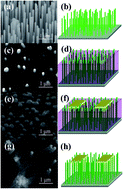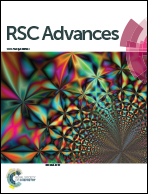The large response current of a vacuum pressure sensor based on a vertically-aligned ZnO nanowires array
Abstract
A vertically-aligned ZnO nanowires (VA-ZnO-NWs) array was prepared via chemical vapor deposition, which was used to fabricate a vacuum pressure sensor and its sensitive characteristics were measured using a semiconductor parameter tester. The response currents are larger than those of the previous sensors based on ZnO nanobelts (NBs) film, ZnO single NW and p-ZnO nanowires. There is a linear relationship in the resistance–vacuum pressure curve of the logarithmic coordinate system. The measurement of the vacuum pressure is in the range of 10−5 to 103 mbar and the power consumption is in the range of 102 to 103 μW, which is wider and much lower, respectively, compared with the traditional vacuum pressure sensors. The current–time curve of the vacuum pressure variation was used to study the response speed and repeatability. The sensitive mechanism is discussed using oxygen chemisorption and the unique NWs array structure to understand the large response current and high sensitivity of the VA-ZnO-NWs array sensor. The adsorbed oxygen on the large surface area of the ZnO NWs can form an electron depletion layer on the surface, and the unique NWs array structure with large surface-to-volume ratio provides abundant carrier channels for electronic transport.


 Please wait while we load your content...
Please wait while we load your content...